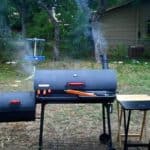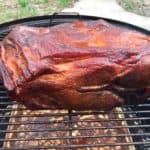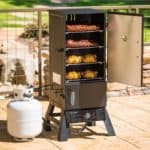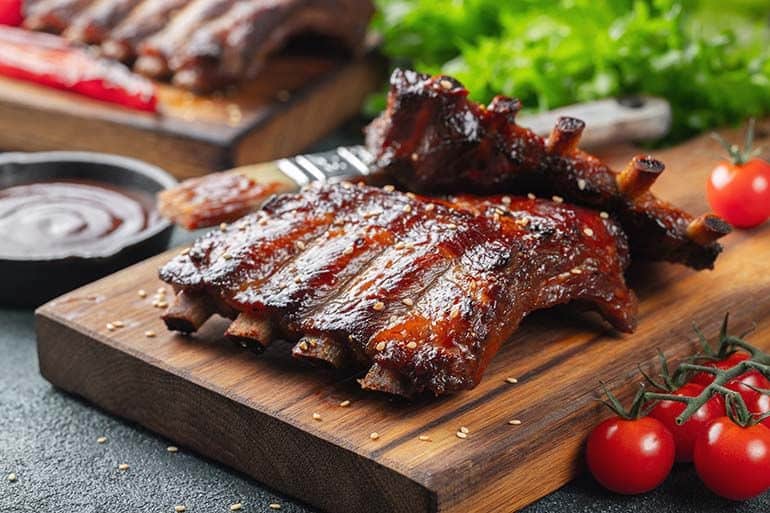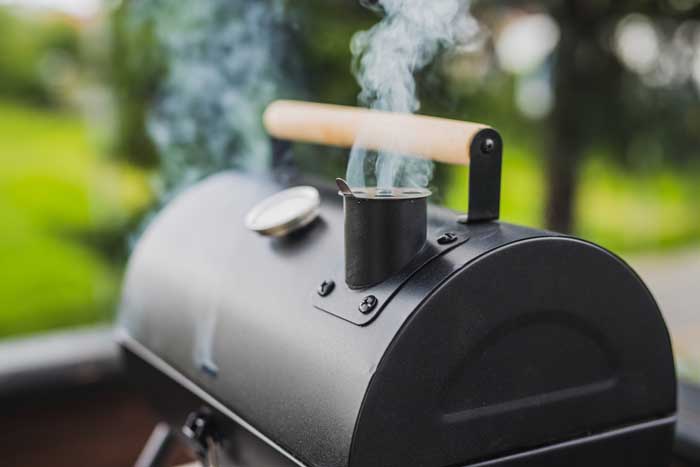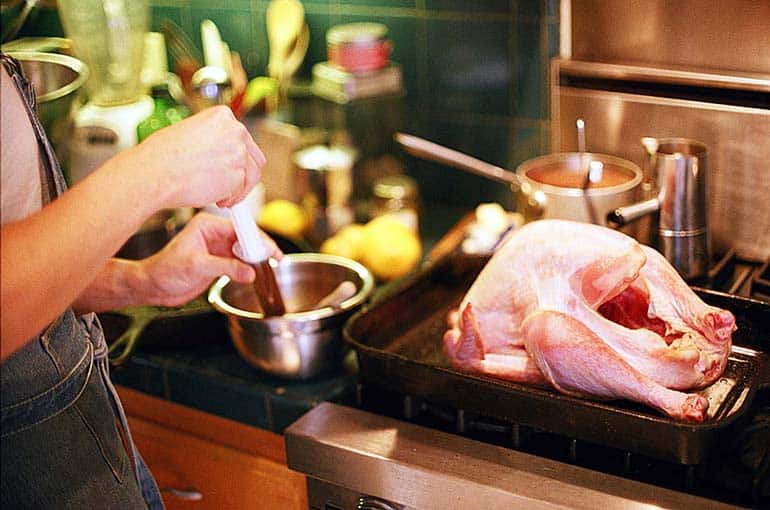What’s the lowest temperature you can smoke meat at? Find out how you should be smoking pork, ribs, brisket, and more.
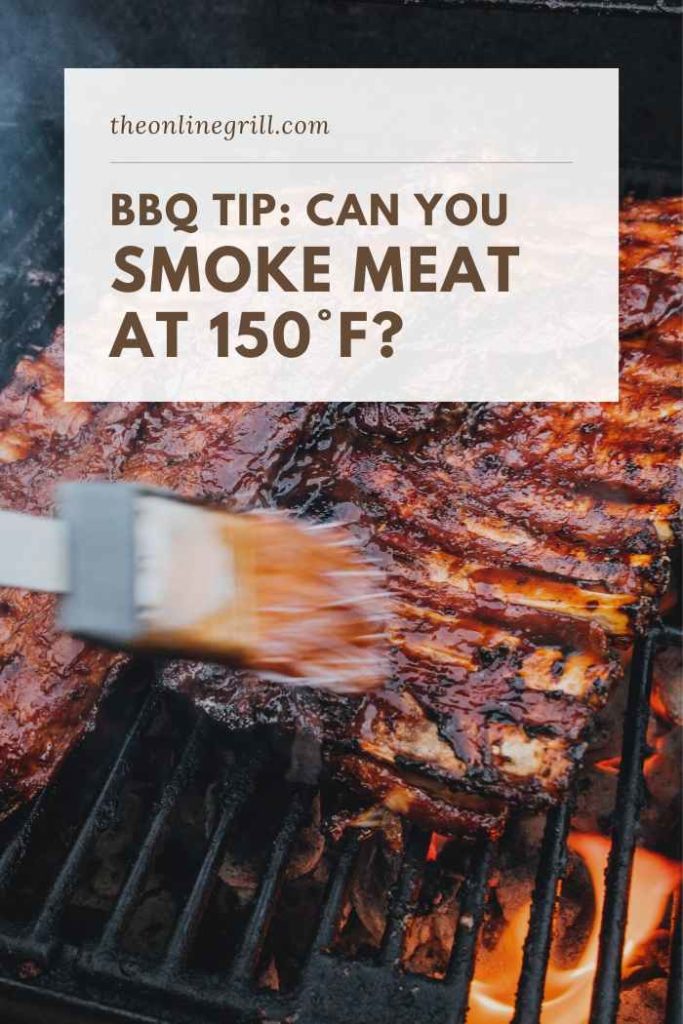
BBQ smoking is all about low and slow cooking, and keeping a stable cooking temperature over several hours is the key factor for ensuring the perfectly smoked meat.
You’ve probably been there. You find yourself constantly having to tweak the coals and vents on your smoker to try to keep to the 225°F (107°C) that’s you see recommend for good meat smoking.
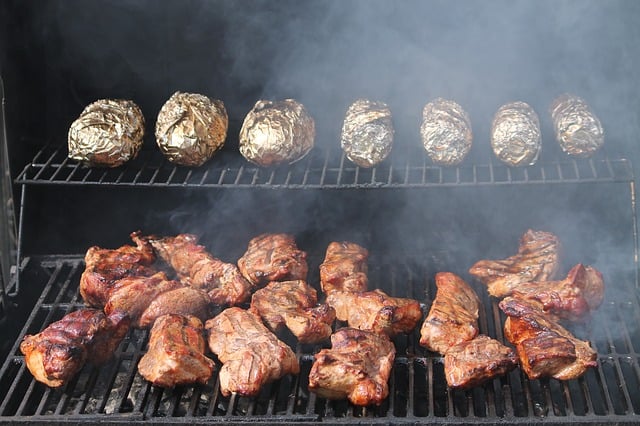
But sometimes factors like wind can mean that your smoker struggles to maintain a high temperature that comes close to 225°F. Whether it’s the weather, or your charcoals, or perhaps you even have a leak in your smoker, you might find it hard to reach the heat levels that you see recommended online.
I’ve seen the question ‘can you smoke meat at 150°F’ asked around a lot, so I wanted to pitch in and give me two cents.
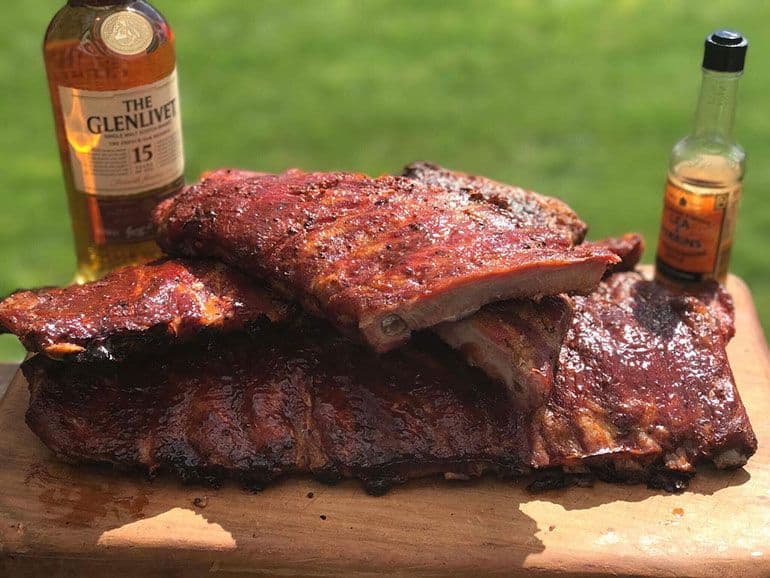
In short the answer is no, you can’t.
Many people make the argument that as long as your meat’s internal temperature hits your target temperature then you have nothing to worry about, but this isn’t true.
Let me tell you why.
We need meat to be above 140°F (60°C) for as much of the cooking process as is possible. While smoking is a low and slow method, it simply isn’t safe to have the meat lie below that temperature (unless it’s refrigerated or frozen) for several hours. Smoking at 150°F won’t get us to this point quickly enough.
Meat in particular is at great risk to pathogens when they lie below 140°F (source). If we try to smoke meat at 150°F then we are simply leaving meat vulnerable to spoiling for too long.
I am sure that there are a lot of people who will argue against this, however when it comes to food (and particularly meat) safety, you don’t want to mess around. I would err firmly on the side of caution and allow your smoker to cook at the correct target temperatures.
I understand that factors like wind might be playing havoc with your smoker’s internal temperatures, so to combat this I would try using a few different approaches to try to ramp up that smoking temperature…
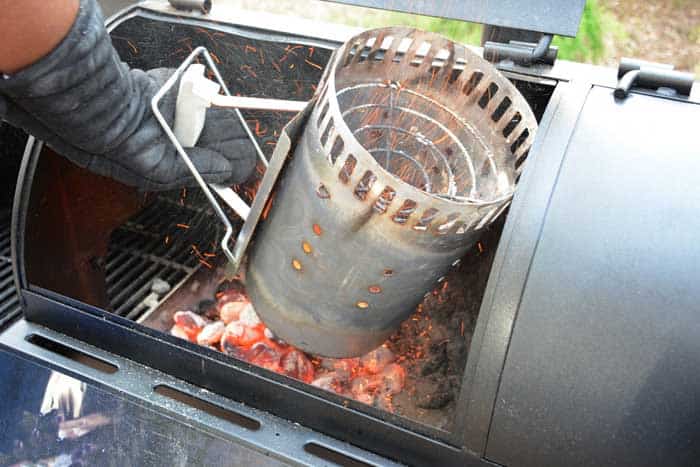
Use extra coal
You can use extra coal right at the start to help kick off your smoking at a higher temperature, which will help your meat cross that 140°F threshold as soon as possible.
Using a charcoal chimney is a great way to heat up coals quickly and easily. Best of all, they’re affordable and easy to use. Check out our guide to the best charcoal chimneys here.
Once you cross this mark and are firmly out of the danger zone, then you can dampen the coals a little bit and cook at a much nicer low and slow temperature.
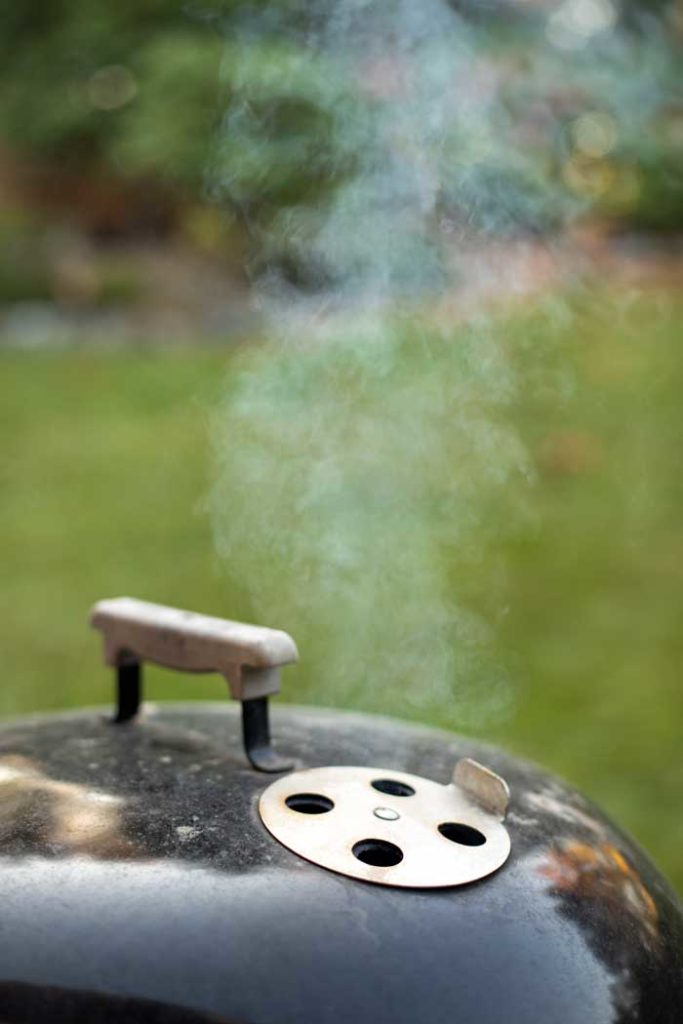
Open your smoker vents as widely as possible
Oxygen is as much of a fuel for your grill as coals are, so try to feed your flames as much as possible by opening up your smoker’s vents (also called dampers).
Your smoker should have at least two sets of dampers. One is called the intake damper, which is usually located near the bottom of your smoker chamber and is where air feeds into your smoker. The other is called the exhaust damper, which should be located in the upper part of your smoker and is where air escapes from.
When these dampers are set wide open, you are ensuring that the maximum amount of air possible is feeding your smoker.
You can read my full guide to regulating temperature using your smoker’s vents here.
The problem here is that if excessive wind is paying havoc with your internal temperature, then air vent use might not have maximum impact.
Which brings me on to my next point.
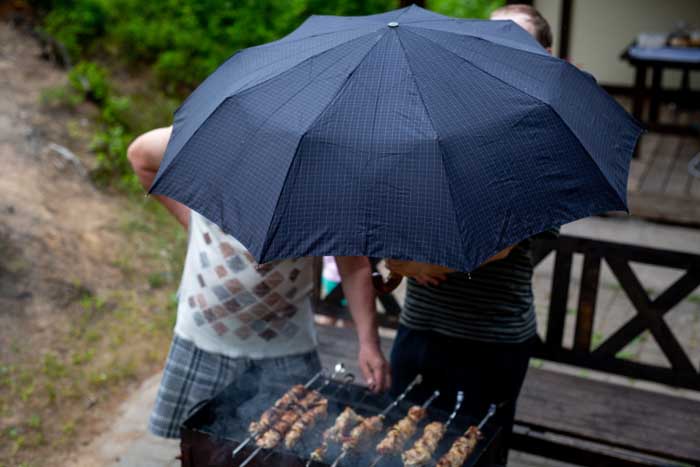
Find a sheltered area (or get a windbreak)
I always try to set up my smoker so that it’s in a spot in my yard that’s well hidden from potential weather influences, particularly the wind. For me, this is besides a wall on my patio, and it helps to keep the smoker (and myself!) well shielded from the elements.
I know this isn’t always possible though, in which case I recommend getting a windbreak to help you smoke and grill in the rain or wind. These are man-made portable structures that you can place between your smoker and the direction of the weather to help shield it. Fortunately, they are fairly inexpensive and can be bought online easily.
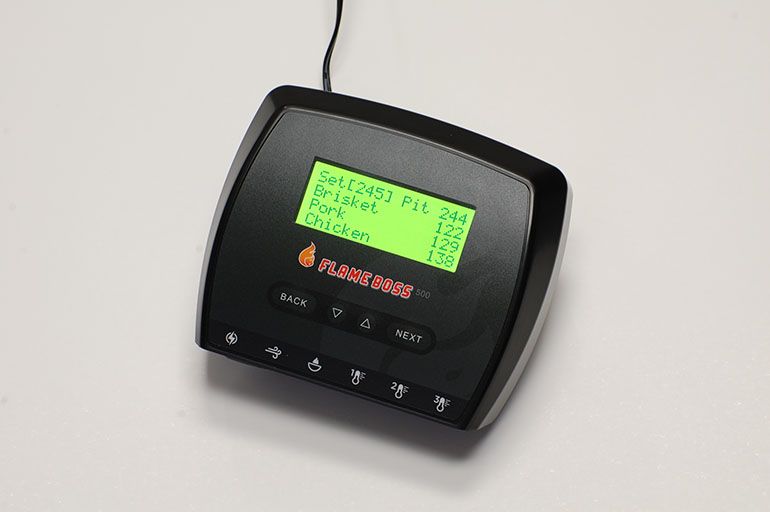
Get an automatic smoker controller
Finally, if you’re struggling to make good use of your smoker’s vents then I recommend getting an automatic controller. These are small machines that you wire up to your intake and exhaust vents, and the controller will then gauge the temperature in order to decide how the vents should be set in line with your target temperature. If the temperature is too low, it will open up the vents. If it’s too high then it will shut them slightly.
What’s particularly great about the better models is that they actually learn over time how your smoker reacts to changes in vent settings and the impact of the weather, meaning that they get more effective over time.
If you don’t have one then check out my guide to the best automatic smoker controllers.
